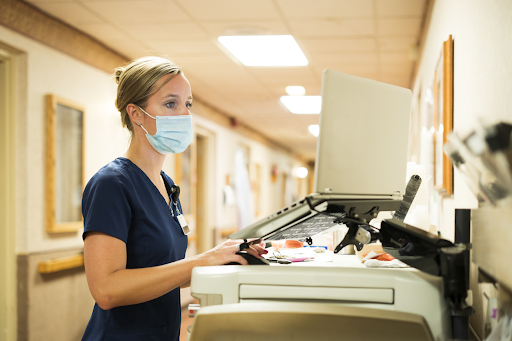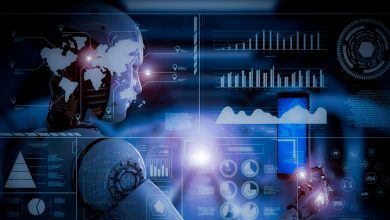Five Technologies Helping Military Nurses Today

Nurses are incredibly important to the healthcare system in the US, but you might not have considered their role in the military. Military nurses are often present on the front lines during conflicts to care for the soldiers under their care. Their duties range from carrying out routine health checks to dealing with critical injuries.
In this article, we will explore some of the ways that they use technology within their role. More specifically, we will explore the way that telemedicine, electronic health records, medical devices, tactical radios, aeromedical evacuation technology and simulation training allow military nurses to treat their patients more quickly, safely and accurately.
What is a Military Nurse?
Before we discuss how military nurses are treating their patients, let’s outline what exactly military nurses do. These professionals are responsible for not only helping injured and sick patients recover, but also serving as important support networks for soldiers and other military personnel in incredibly stressful and difficult circumstances. If you’ve ever been treated by a nurse first-hand, or have been around loved ones who were, then you’ll know just how important they are in the medical system. Now, imagine your loved one isolated in a combat zone without the ability to see you when they are ill or injured, and you can imagine the lifelines that military nurses provide.
Military nurses must have all of the skills that nurses in other fields possess, including the ability to function under pressure, the capacity to make accurate split-second decisions, and the sense of calm required to guide patients through unexpected illnesses and injuries. In addition to those skills, however, they also need nerves of steel and the flexibility to jump into unforeseen situations head-first to care for the people around them. From working in active combat zones to being called on to provide medical care during natural disasters, military nurses work in highly sensitive situations that call for impeccable professionalism and care.
As you might imagine, working as a military nurse can be challenging at times. Whether you are working under fire in combat zones or are doing your best to maintain contact with patients as they enter unchartered territory, military nurses have their work cut out for them. Luckily, technology has made their work easier. Let’s look at how military nurses use technology within their role to more effectively and safely treat their patients.
Telemedicine in Combat Zones
When you need to see a healthcare provider immediately, waiting for the next in-person appointment just isn’t an option. The chances are good that you’ve experienced this in your own life. Illnesses and injuries show up when they are least expected and when we are least able to easily care for them. This is especially true for soldiers and other military officials stationed in combat zones.
Imagine that you are an experienced soldier responsible for keeping a specific population of people safe from enemy combatants. You don’t have any time or attention to spare, and potentially serious health conditions such as untreated bladder infections, for example, can be the difference between life or death for dozens, hundreds, or even thousands of people. Leaving the field and visiting a medic simply isn’t an option in these situations, yet medical care still needs to take place.
Telemedicine is making a huge difference in the way that health conditions in combat zones are assessed. While seeing a physician or other professional in person can be difficult in a combat zone, especially if the medics on site are concerned about wounded soldiers or civilians, today’s military professionals can often see a military nurse remotely instead. Military nurses are able to provide effective medical care for common issues via telemedicine platforms, which ensures that soldiers are well cared for even in stressful circumstances.
Electronic Health Records
In a similar vein to the above, electronic health records (EHRs) are making it easier to provide comprehensive care under difficult situations.
Imagine that you are a military nurse and you have been called in to support communities in crisis after a natural disaster. Your work is difficult, and you are often caring for many patients in a very short span of time. You simply don’t have the ability to cart around heavy medical records in this situation, and also sorting through paper files can take too much time even if you were able to bring them along. EHRs make doing your job in this situation much easier. You can often look up a patient’s health records electronically and find information that’s relevant to their current health concerns, and make sure that the treatment you prescribe is in keeping with the rest of their healthcare needs.
The same is true in combat situations. When you are caring for ill or injured soldiers, sitting down and digging through hard copies of medical records is a luxury that most military nurses simply don’t have. EHRs make it easier to ensure that patients receive the care needed to help them recover without exacerbating any other existing health concerns.
Medical Devices and Monitoring
Medical devices and monitoring are another area where military nurses use technology to treat patients efficiently and safely. More specifically, wearable devices can provide real-time updates to nurses as patients go about their daily lives, allowing them to monitor their condition on the go and intervene if any emergencies strike. This kind of device can also help nurses to assess their patients’ health more effectively.
Have you ever been asked to describe symptoms to your doctor only for any and all memories of them to disappear from your mind? Perhaps you’ve remembered something that you think is important hours later, well after you’ve left the office. This experience is a common one, and patients around the country experience the same difficulties. Through the use of medical devices, military nurses are sometimes able to track patients’ symptoms without requiring them to offer much information. With more accurate monitoring comes more accurate care, and this technology can prove invaluable in certain situations.
Field-deployed telemedicine kits are another example of medical devices and monitoring improving the quality of care that members of the military receive while in combat zones. These kits often include devices that are designed to provide a deeper understanding of someone’s health remotely, including:
- Real-time medical images
- Dermoscopes
- Otoscopes
- Ultrascopes
- EKG monitors
- Stethoscopes
- Tools to facilitate the reading and interpretation of all of the above
This comprehensive set of tools allows medical professionals to do everything from conducting pregnancy ultrasounds to examining strange skin growths remotely, giving military professionals access to thorough care even in the midst of difficult situations and environments.
Tactical Radios
In addition to the telemedicine kits and other medical devices described above, tactical radios form an important part of healthcare for members of the military in combat zones. Imagine that soldiers and other military professionals have access to everything described above, but they have no way to speak with medical professionals directly to learn about their health and receive any treatment instructions. Providers might be able to determine that something serious needs to be treated, but they simply wouldn’t be able to do anything about it. Tactical radios are an important piece of technology for this reason (and many others).
Tactical radios are designed to allow soldiers to remain in contact with each other as well as anyone else with a radio even in very volatile situations, such as in the middle of a field operation where you fall ill or are injured and aren’t sure how to help yourself. Cell phones are likely inoperable in this kind of situation, which means that tactical radios serve as lifelines for the people who have them. They allow soldiers to interact with medical professionals and, when combined with the field-deployed telemedicine kits described earlier, receive comprehensive care when they need it most.
Of all the technologies that we’ve discussed so far, tactical radios are one of the most important. The ability to keep military professionals connected to each other in emergencies is invaluable and can be the difference between life and death in combat zones.
Simulation Training
So far, we’ve explored the way that technology can be used actively by nurses while they are carrying out their duties every day, but in this section, we’ll look at how it can help nurses master the skills they need to successfully treat their patients.
It is important to recognize that military nurses often experience a rapid ‘trial by fire’ when they enter the profession. Preparing someone for the realities of medical emergencies in combat zones or other high-pressure environments is incredibly difficult, and sometimes words can fail to accurately describe this kind of situation. As a result, some military nurses simply don’t have the understanding they need to thrive in busy and dangerous circumstances as they try to provide their patients with quality care. This not only often leads to incredible amounts of stress but can also weaken the care that soldiers or other patients receive.
As you might have guessed, technology is here to save the day! Simulation training makes it easier to prepare nurses for the realities of working in active combat zones without requiring them to visit them in person. This makes adequately preparing new nurses for the job quicker and more feasible than more traditional educational methods. Alternate reality (AR) training, in particular, allows aspiring military nurses to experience some of the unbelievable situations they might experience in combat zones first-hand. This kind of training is quite rigorous, and it is relatively easy to ‘trick’ the senses into believing that perceived concerns are real. As a result, students are able to experience the challenges of high-pressure work and hone their skills accordingly.
Hands-on Training
Access to hands-on training is also one of the most important methods of learning that a nurse can undertake, which is why clinical placements are so important for aspiring military nurses. At Wilkes University, for example, students have access to a preceptor and a clinical supervisor on their placement. Learning through hands-on experience in their placement is one of the many benefits of BSN-prepared nurses who will be ready to get the ground running quickly and adapt to the fast paced care settings. Likewise, studying through evidence-based practice also helps aspiring nurses to excel in their careers – hands-on and simulation training through evidence-based practice will almost certainly lead to a competent nurse.!
Summary
Military nurses are required to remain calm in the most chaotic of circumstances, and anything that we can do to help students prepare before they enter the field is valuable. If you are interested in learning more about military nursing and what you can expect if you enter the field, keep the information above in mind and do some independent research. You’ll be making a difference to the lives of soldiers and military professionals worldwide in no time.
For more valuable information visit our website.






